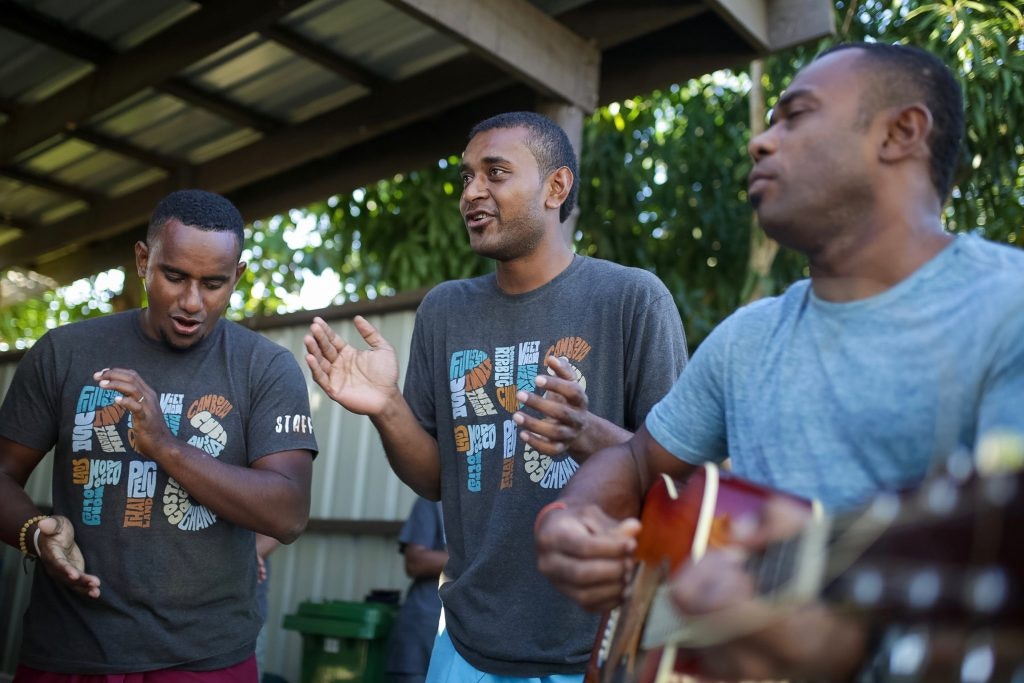







Parents are naturally concerned about their child’s well-being during student travel programs. One of the first questions may be – what destinations are safe places to travel to right now? Beyond that, there are frequently questions about specific measures taken to handle medical needs and basic student safety.
For a detailed overview of how we approach health and safety, visit our Health and Safety page.
We have many safety protocols in place based on decades of experience. Here are some of the ways we strive to keep students safe during their travels.
Often when we travel with family and friends, we’ll research a destination and ask for advice, but we really don’t know what we are getting into until we get there. That is certainly not the case with our programs.
They’re held in locations where we’ve been organizing trips for years and have strong community partners. This alone reduces the chances of any surprise problems, but extensive planning still is completed for each program.
This preparation includes visits to the itinerary sites, along with the vetting of vendors and facilities used during the trips. All aspects of the programs are reviewed, ranging from transportation and lodging to activity operators and service project sites.
We ensure students have clean water to drink, healthy food to eat, and safe places to sleep. As a bonus, the teens always travel in groups, so there aren’t concerns about solo travel.
>> Learn More The Best Destinations for Summer Programs Abroad.
The program leaders are the staff members who will interact with the students the most. They facilitate the activities, foster group dynamics, and are a go-to resource for the students if any needs arise.

All of Rustic’s international programs have at least one program leader from the country itself. They are matched to their programs based on their areas of expertise. For example, Rustic Pathways has a number of biologists on staff who run programs on conservation like Wild Galapagos: Eco-Service in Ecuador.
Many leaders also have a background in education, particularly in experiential, hands-on learning. Leaders often have a lot of travel experience as well, giving them the flexibility needed to handle any problems thrown their way.
On the healthcare front, our program leaders have Wilderness First Aid and CPR certification. They also receive more than 60 hours of specialized training that allows them to support students during their travels. Each leader also goes through an official background check.
Learn more about how to stay safe while traveling in our first-time traveler’s guide.
One of the most important steps to keep students safe is the proper gathering of medical information. Parents are asked to provide details about medications or health measures that may be needed for a student’s healthcare. This includes any mental health concerns. These details are crucial components in the efforts to keep students safe.
In addition to filling out forms, parents are welcome to discuss any particular medical concerns with the staff before a trip.
Discover why families trust Rustic Pathways for safe student travel
If a student has a challenge like a food allergy or a medical limitation, Rustic has procedures in place to handle these issues.
For food allergies and restrictions, menus can be altered to handle most major allergens, such as peanuts, tree nuts, milk, wheat, and soy. We also accommodate special dietary needs, such as gluten-free diets. Students with a history of anaphylaxis should bring epinephrine pens and go over safety protocols with us before their program.

Food allergies and restrictions can be accommodated by working with Rustic’s staff.
Likewise, we are able to accommodate most medical limitations. Therefore, it is uncommon for a student to be unable to do a program or activity.
Read More: Safety Questions Parents Should Ask About Student Travel Programs
Travel insurance is really important if medical needs do arise. It provides coverage for medical expenses and can even help with medical records. Therefore, parents are strongly encouraged to have this insurance for their teens.
For our student travelers, we recommend our trusted insurance partner for reliable, inclusive travel insurance.
The vast majority of medical problems that occur during programs are minor. They may include abrasions, twisted ankles, headaches, or an upset stomach. The program leaders can address these concerns and evaluate if more care is needed, in partnership with the parents. After getting the proper care, students are usually able to safely get back to participating in their programs in no time.
If a visit to a clinic or hospital is warranted, Rustic Pathways knows all the best medical facilities in the regions where the programs are held. This will guide these decisions.
In addition, we have a partnership with a leading organization that provides expertise on medical care overseas and in the worst-case scenario can help with medical evacuation. After each program, we also regularly evaluate our safety measures and make any adjustments necessary.
Keeping in communication open and staying in touch is essential to peace of mind and stress-free trip. Generally during a trip, no news is good news.
However, if something goes wrong, we will certainly be in touch to work in partnership on a solution. Keeping students safe is our number one priority and we have dedicated staff on the ground to communicate with both students and parents simultaneously.
Parents can be confident that the Rustic local experts and staff has successfully navigated many challenges over the decades and is dedicated to helping students thrive.
If you have any questions about student safety, please feel free to contact us.